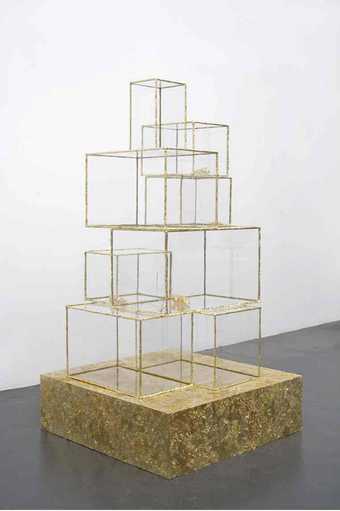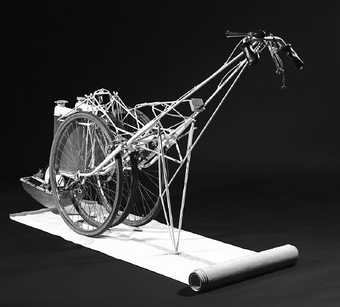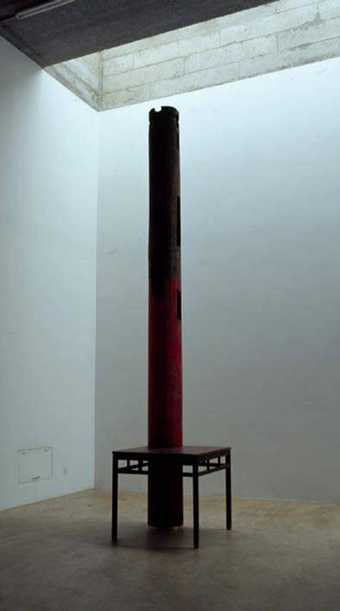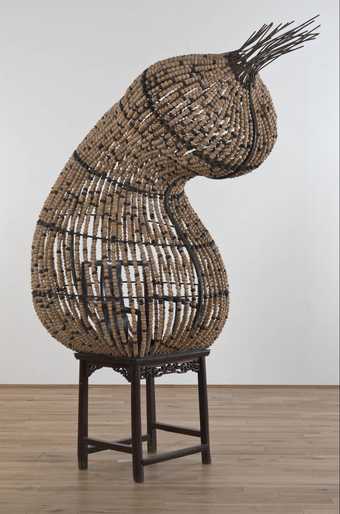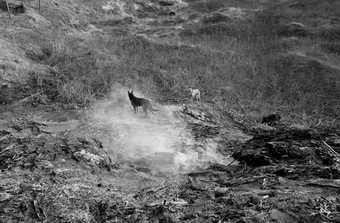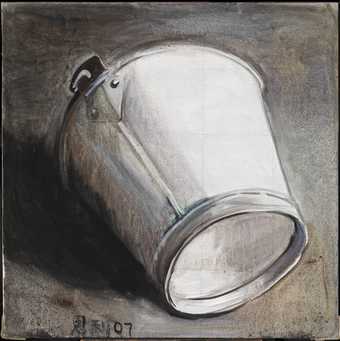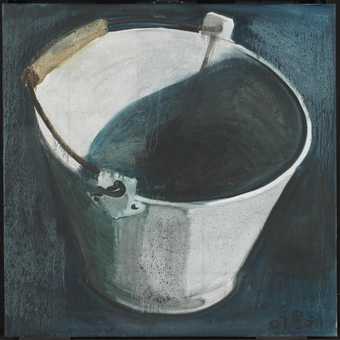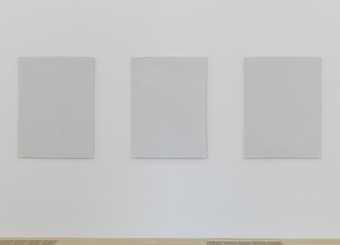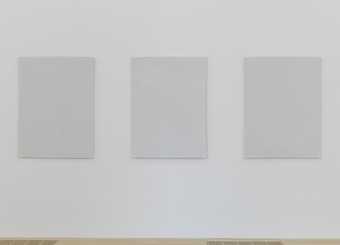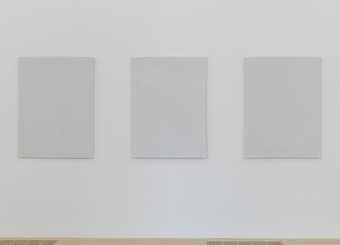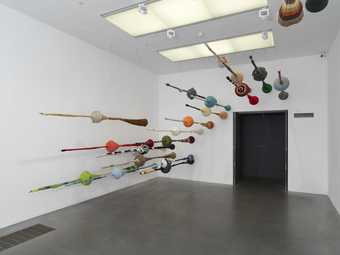Not on display
- Artist
- Ai Weiwei born 1957
- Medium
- Tree sections and metal bolts
- Dimensions
- Object: 6800 × 6500 × 6500 mm
- Collection
- Tate
- Acquisition
- Purchased with funds provided by Tate International Council, Tate Patrons and Yuz Foundation with support from Ai Weiwei 2016
- Reference
- T14630
Summary
Tree 2010 is a monumental sculpture assembled from the dry, dead branches, roots and trunks of numerous species of tree, such as camphor, cedar and ginkgo, that Ai Weiwei gathered from across the mountainous southern region of his native China. The sculpture mimics the form of a real tree, although the cuts and joins are left visible, highlighting the different types of bark. Although it is a unique work, there are fifteen similar sculptures with the same title dating from 2009 onwards, all of which are smaller in size and which can each be exhibited either inside or outdoors. This Tree owned by Tate was on display at the Helsinki Art Museum as part of Ai’s solo exhibition held from September 2015 to February 2016. Tree also served as a mould for a related iron sculpture entitled Iron Tree 2013 (Yorkshire Sculpture Park, Wakefield).
Tree celebrates an indigenous Chinese custom, typical of the markets in and around the town of Jingdezhen in the northeastern Jiangxi province, in which vendors sell distinctive tree trunks, branches and curiously shaped roots as objects to be appreciated and displayed in the home. Ai visited Jingdezhen while working on his installation Kui Hua Zi (Sunflower Seeds) (Tate T13408) for the 2010 Unilever Commission at Tate Modern, London. Tree also evokes traditional Chinese Zen gardens, sites for contemplation and retreat associated with Buddhism and Taoism in particular. These gardens represent the world through cycles of birth, maturity, decay, death and rebirth. They depend on an appreciation of the aesthetic and contemplative value of trees, rocks and other natural elements. In this context Tree can be read as a reference to Taoist ideal of harmony – unifying the work of man with nature as well as linking the earth and the sky.
Tree also draws attention to the conceptual relationship between material and form in sculpture. Although different trees have been reduced to their essential material and then reassembled by the artist and his assistants in a form that resembles a tree, the intention is not illustionistic. The viewer is not led to believe this is a natural living tree; rather the visible joins and changes in the work’s surface reveal its artificiality and the method of its contruction. This approach can be compared with the artist’s earlier Table and Pillar 2002 (Tate T12809). In this work Ai reconfigured individual elements of a table and pillar from the Qing dynasty into a new form, denying its original function and effectively destroying a piece of antique furniture. In their new and afunctional form, both sculptures exemplify the artist’s interest in the physical and aesthetic qualities of material and its transformative nature. He has emphasised the importance of ‘readymade’ materials for his art: ‘My work is always readymade. It could be cultural, political, or social, and also it could be art – to make people re-look at what we have done, its original position, to create new possibilities. I always want people to be confused, to be shocked or realize something later’ (quoted in Delson 2011, p.63).
Ai’s work often points to complex social and geopolitical issues affecting contemporary China. The dry wood of which Tree is composed draws attention to the country’s rapid urbanisation and economic growth, which have resulted in damage to the natural environment and the suppression of traditional culture. In addition, the act of bringing together numerous individual branches to create a whole can be read as symbolic of the relationship between the individual and society, a broader issue but one which has particular resonance in a Chinese context.
Further reading
Susan Delson, Ai Weiwei: Circle of Animals, Munich, London and New York 2011.
Ai Weiwei and Anthony Pins, Ai Weiwei: Spatial Matters: Art, Architecture and Activism, London 2014.
Ai Weiwei @ Helsinki, exhibition catalogue, HAM Helsinki Museum of Art, Helsinki 2015.
Lena Fritsch
August 2015
Does this text contain inaccurate information or language that you feel we should improve or change? We would like to hear from you.
You might like
-
Terence Koh Untitled (A New World Order Lies in this Golden Age)
2006 -
Gunter Demnig Blood Trail (Kassel/London)
1981 -
Mona Hatoum Incommunicado
1993 -
Ai Weiwei Table and Pillar
2002 -
Xu Zhen 8848 - 1.86
2005 -
Chen Zhen Cocon du Vide
2000 -
Yang Fudong East of Que Village
2007 -
Zhang Enli Bucket 3
2007 -
Zhang Enli Bucket 5
2007 -
Ai Weiwei Sunflower Seeds
2010 -
Liu Jianhua Blank Paper
2012 -
Liu Jianhua Blank Paper
2012 -
Liu Jianhua Blank Paper
2012 -
Yin Xiuzhen Weapon
2003–7 -
Zhang Xiaogang New Year’s Eve
1990


